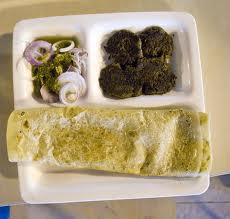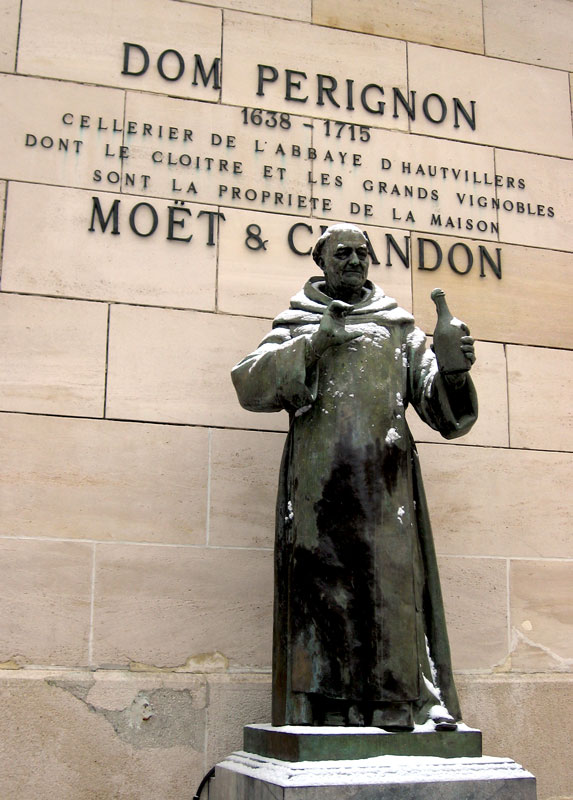“Remember, gentlemen, it’s not just France we are fighting for, it’s
Champagne!”
Winston Churchill, Prime Minister of Great Britain, (1874 – 1965).
Given that food is an unendingly fascinating subject in my life, it follows that some of the most animated and involved conversations I’ve had revolve around it. So, when Haji Murad Ali’s Tunday Kebab opened in Bangalore, it was not-quite-incidental that a discussion would arise around the taste and its authenticity.
Tunday Kebabi’s famous Galouti Kebab
“It doesn’t taste quite like Lucknow.”
“It’s Tunday Kebab, but not exactly.”
“Tunday Kebab sirf Lucknow main khane chahiye, nahi toh swaad nahi aata.” (Tunday Kebab should only be eaten in Lucknow; it doesn’t taste the same anywhere else.)
Which made me think about the tastes that we associate with particular places. I mean, think about it – if you’ve had pachranga achar from Panipat, no one could fool you with garden-variety, store-bought stuff from anywhere else in the country, could they?
This idea of food being specific to a place got more intriguing, the more I thought about it!
We all know Champagne’s story. If it hadn’t been for the French being, well, French, about their bubbly, sparkling white wine produced anywhere in the country would be sold at champagne rates. In fact, did you know that when the French authorities tried to redraw the boundaries of the region of Champagne for economic and revenue purposes early in the 20th century, it sparked the Champagne Riots of 1908 and 1911? Potent stuff, that bubby is!
Image above and on article thumbnail originally published on MCU035’s photostream on Flickr. Image published under a Creative Commons Attribution 2.0 Generic License.
Champagne is not champagne unless it is produced in the Champagne region of north-east France. White wine, with sparkling bubbles, produced anywhere else in the world is just sparkling wine. To be champagne, it must be produced in Champagne.
And so champagne gave the world the first laws on geographical indications.
Geographical indications – that is, information highlighting the exact area of origin of a produce – started soon after the monk Dom Perignon discovered stars in his wine. Almost as early as the latter half of the 18th century, it became increasingly necessary to protect champagne from “impostors” – white wine with some fizziness, but of far inferior quality, being sold as “champagne from Champagne”. By then, pretty much anyone with gold to spare and a taste for the good life had encountered champagne and was increasingly wary of cheap reproductions. The logical step was to regulate the production of bubbly and so emerged the concept of geography-specific protection of products.
Image above and on article thumbnail originally published on facelikebambi’s photostream on Flickr. Image published under a Creative Commons Attribution 2.0 Generic License.
Towards the beginning of the 20th century, appellation d’origine contrôlée (AOC – translated as “controlled destination of origin”), the first of the regulatory frameworks granting recognition to region-specific products, came into existence. Since then, France has closely protected many agricultural products, especially food items such as cheeses, by providing recognition of standards and quality associated with a product that originates in a particular region.
Needless to say, the world figured how economically viable this is.
 And now, India is protecting its kebabs, along with the laddoos from Tirupati and its very own Nashik wine! Recently, a Geographical Indicator (GI) recognition application for Lucknow’s kebabs was sent to the office of the Controller of Patents, Designs and Trademarks for registration. If granted this registration, kebabchis in Lucknow can better maintain the standard of the product and ensure protection of the brand. They will also be able to standardise pricing. But most importantly, they will be able to stop export of the product, unless it meets the industry standard as recognised by the registered GI standard.
And now, India is protecting its kebabs, along with the laddoos from Tirupati and its very own Nashik wine! Recently, a Geographical Indicator (GI) recognition application for Lucknow’s kebabs was sent to the office of the Controller of Patents, Designs and Trademarks for registration. If granted this registration, kebabchis in Lucknow can better maintain the standard of the product and ensure protection of the brand. They will also be able to standardise pricing. But most importantly, they will be able to stop export of the product, unless it meets the industry standard as recognised by the registered GI standard.
So no matter where Miyaan Haji Murad Ali’s family makes its kebabs, to be Tunday Kebab, it’ll have to taste just like Lucknow!
(Suhasini Rao Kashyap is part of the faculty at myLaw.net.)




3 replies on “Sharaab or Kebab: A Tastefully Legal Take on Tunday Kebabs and Champagne.”
Again, after Tirupati Ladoo and Hyderabadi Haleem, the question that bothers me is how it makes sense to grant a GI to these food stuffs if the philosophy behind granting of GI’s is the ‘terroir’ concept. Merely, by the fact that the family were original residents of Lucknow, I don’t see how Tunday Kebab acquires distinct characteristics attributable to the region.
Good thought! Yes – GI started off as protection for ‘terroir’ but then, it has morphed into a way of protecting products unique to an area. Think about it, doesn’t it seem a little, unusual, to indicate that Black Forest cake could be made without chocolate? Especially since the “forest” in it is actually dark chocolate and the entire concept originated in the Black Forest region of Germany! Similarly, Tunday kebabs, or for that matter, any food product, made elsewhere than a particular region, must comply with a certain standard (including that of taste/texture/aroma) under GI protection. How feasible it is – only time will tell.
Ahh well. I guess one could make the case of Bourbon whiskeys (:)) in support of this. Kentucky and Tennessee. There is substantial difference in the manufacturing process, but then, the terroir of either regions has nothing much to contribute to the taste/texture/aroma of the whiskeys. (I think. :P)
Also, another thing, I believe GI’s are in the nature of a community right. So can a GI be granted to a single manufacturer? In this case, the whichever family?